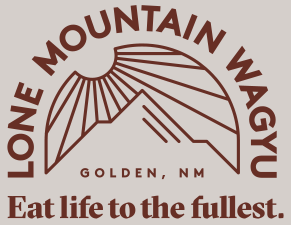
As any rancher of quality will tell you, if you want steaks with abundant marbling, make sure your cattle never see a bad day. So what’s a good day for cattle? Honestly, not all that different from a good day for a human: plenty of delicious food, lots of shade outside on a sunny day, and respect and care all around.
Why is marbling important?
Marbling, or intramuscular fat, is what gives prime steaks that melt-in-your-mouth feel and rich umami taste. Ideal marbling is bright white and evenly distributed in slender tributaries, rather than thick rivers, across the cut of meat. When you cook a Wagyu steak, the abundant, well-distributed marbling will melt and infuse the entire cut with rich, essential omega-3, omega-6, and omega-9 fatty acids, quite similar to the monounsaturated fats found in olive oil and wild salmon.
How does the quality of life affect marbling?
Wagyu are already genetically predisposed to have higher levels of marbling than any other breed of cattle, but even Wagyu beef can be ruined if the cattle are raised in a harsh environment. This could include:
- Exposure to extreme weather
- Improper animal handling
- Untreated illness
- Distressing transportation
- Inhumane harvest
Any of the above can add undue stress to the cattle’s existence and reduce the number of “good days” on which the animal is likely to deposit marbling. Fat stored by animals is essentially an energy reserve that can be used on a rainy day—or, for cattle, a particularly stressful day on the ranch. By eliminating as many stressors as possible, you can help ensure your cattle do not have to waste any of their precious fat.
How do farmers create a low-stress grazing environment?
Wagyu cattle are delicate, and raising them is similar to rearing a thoroughbred racehorse, in that attention needs to be paid to the tiniest of details. They should spend their days roaming large undeveloped pastures with a variety of flora and fauna so they can feed on grasses rich in vitamins and minerals and give back to that same ecosystem, in kind (with their droppings).
Any nutrients that Wagyu might not find on the pasture can be supplemented with a traditional blend of grains developed specifically for the breed, which can also help cultivate marbling. Although many conventional operations induce rapid weight gain in their cattle, slow feeding is the way to go if you want fine and even marbling. Slow feeding allows cows to gain weight at a steady and natural pace over 500-600 days, which is best for the animals and the end product.
Providing shelter to shield cattle from extreme weather, treating them with kindness and respect at all times, and avoiding hormones or subtherapeutic antibiotics are all vital ingredients for content cattle. When it’s time to transfer the livestock to a feedlot in preparation for harvest, try to partner with a Certified Humane feedlot, a designation that signifies the facilities meet baseline standards for humane farm animal care. And when harvest time arrives, make sure the process is as smooth and low-stress as possible. There is a large body of research that backs up the claim that an inhumane or stressful harvest will increase the likelihood of tougher, lower-grade meat.
What are some other benefits of a low-stress grazing environment?
A low-stress grazing and feeding environment not only ensures abundant marbling and high-quality meat, but it is also better for the ecosystem. By utilizing a rotational pasture system, you can help ensure the land is not overgrazed and diversity of the existing wildlife continues to flourish. And by using solar-powered fences and traditional windmill-powered water drinkers, you can avoid excessive use of fossil fuels.
Working with nature, rather than fighting to tame it, creates a natural efficiency on a ranch and allows farmers like us to offer premium products at a reasonable cost. If you’re looking to taste the difference a low-stress grazing environment can make, we recommend starting with our boneless, wonderfully marbled ribeye steaks.





